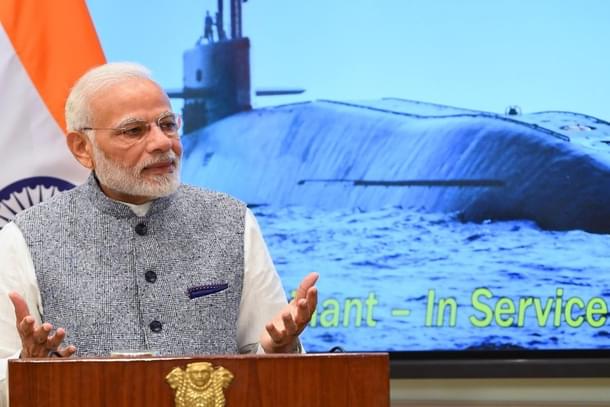Defence
India's Second Ballistic Missile Nuclear Submarine 'INS Arighat' Nears Commissioning; To Join The Navy In The Next One To Two Months
Ujjwal Shrotryia
Aug 12, 2024, 12:13 PM | Updated 12:13 PM IST
Save & read from anywhere!
Bookmark stories for easy access on any device or the Swarajya app.


India's second nuclear ballistic missile submarine (SSBN), INS Arighat, is about to be commissioned into the Indian Navy.
According to a report by the Times of India, INS Arighat has completed all its trials and will be commissioned into the Navy within the next one to two months, marking a significant step in strengthening India's strategic deterrence capabilities.
SSBNs are a type of nuclear-powered submarine that, apart from using a nuclear reactor to power its equipment, also carry strategic nuclear-warhead-equipped ballistic missiles.
INS Arighat is the second submarine in its class, following India's first nuclear submarine, INS Arihant, commissioned in 2018.
Weighing more than 6,000 tonnes, INS Arighat will be slightly heavier and is likely to feature upgrades in electronics, computers, and propulsion over INS Arihant, developed from the experience gained in operating Arihant for the better part of half a decade.
It will be equipped with 12 K-15 nuclear-tipped ballistic missiles that can target ranges above 750 kilometres. It can also carry four larger K-4 Submarine Launched Ballistic Missiles (SLBMs) having a maximum range of 3,500 kilometres.
The K-4 missiles, with their extended range, allow India to target strategic locations, including China's capital, Beijing, if launched from the northernmost tip of the Bay of Bengal.
This capability is a testament to the successful development of INS Arihant and Arighat under the Advanced Technology Vessel (ATV) program, launched in 1974 by then Prime Minister Indira Gandhi.
Measuring 111 metres long, INS Arihant and Arighat were built at the Vizag shipyard.
INS Aridhaman, the third SSBN of the project, is also expected to be commissioned by next year. Moreover, a fourth and even more advanced and larger SSBN, expected to weigh around 13,500 tonnes, is also under development.
These next-generation SSBNs will be able to carry even more — 12 to 16, K-4/K-5 missiles — significantly enhancing India's nuclear deterrence and strategic reach in the region.
Staff Writer at Swarajya. Writes on Indian Military and Defence.





